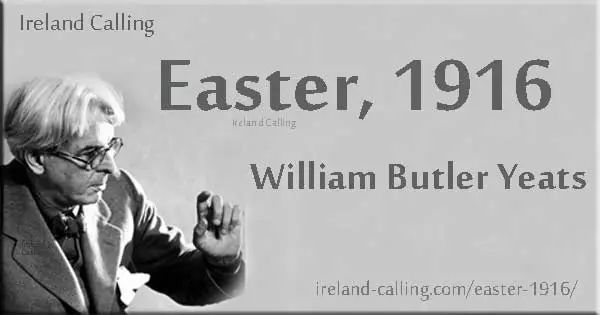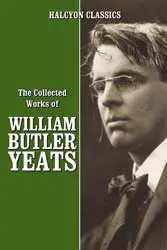The third stanza of Easter, 1916 refers to how the hearts of the rebels have been enchanted to a stone.
This is perhaps an allusion to the Stone of Destiny on the Hill of Tara in County Meath. It was thought to have been used as a coronation stone for Irish kings and became a symbol for Irish freedom and nationalism.
Easter, 1916
Notes and analysis
Main characters
W B Yeats
The stone was also considered sacred to the Tuatha De Danaan – a mythical tribe who according to legend once ruled Ireland.
The Stone of Destiny, and also countless other stones dotted across Ireland, have had a symbolic resonance for thousands of years.
In this third stanza, Yeats uses the image of the stone to highlight the constancy and determination of the rebels.
Yeats had been involved in nationalism in his youth but lost interest and drifted away from it as he got older. The leaders of the Rising, however, had “hearts with one purpose alone”. They are as constant as stones in a stream while the water and the world moves around them.
Fourth stanza – wherever green is worn
In the fourth stanza Yeats steps away from symbolism and starts asking some hard questions. Had the long years of sacrifice hardened the hearts of the rebels to a point where they had lost perspective?
Easter, 1916 was written between April and September 1916, when the Rising dominated Irish politics and public debate. It was published in 1921 as part of the collection, Michael Robartes and the Dancer.
Was their sacrifice worth it, “for England may keep faith”? This refers to a pledge the British Government made in 1914 that it would introduce Home Rule for Ireland once the Great World War was over. Had the rebels waited a few years, they may have achieved Home Rule without any bloodshed.
In the end, the question never arose because the Easter Rising led to the Irish War of Independence and the Home Rule Bill was never enacted.
Yeats questions whether excess of love have overpowered rebels … love for their country, for freedom, for justice. There is no way of knowing. All we can says is that “We know their dream; enough
To know they dreamed and are dead.”
The final lines of Easter, 1916 return to the familiar refrain about a terrible beauty being born. This time Yeats refers to “wherever green is worn”. Green is obviously used as a symbol of Irish nationalism but it is also a symbol of new life and renewal. The “terrible beauty” is also a symbol of hope to people everywhere who feel oppressed and want to achieve freedom.

